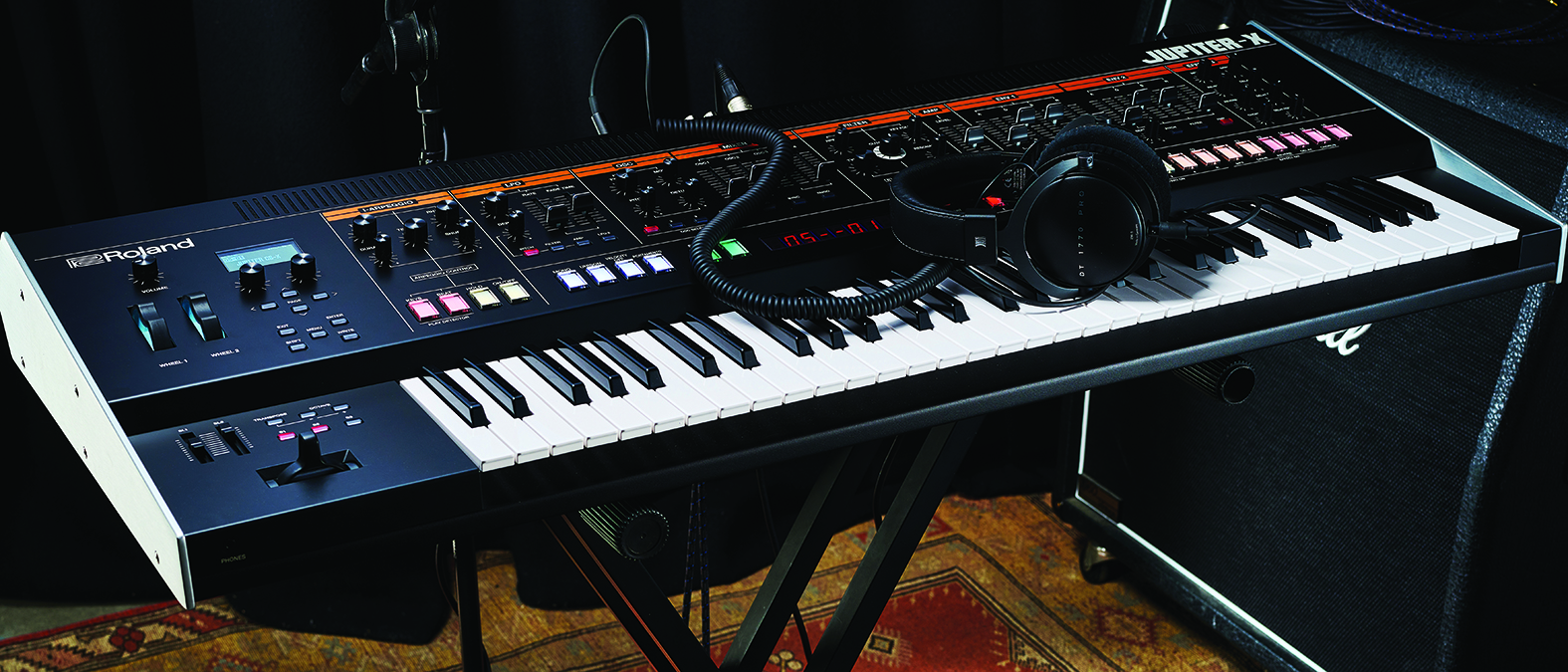MusicRadar Verdict
This is not just a modern take on a classic original, but a great product in its own right and worthy of the Jupiter name.
Pros
- +
Looks and sounds fantastic.
- +
Huge range of over 4000 great sounds.
- +
Excellent keybed.
- +
Plenty of hardware controls.
- +
12-month subscription to Roland Cloud.
Cons
- -
No direct control over portamento.
MusicRadar's got your back
Roland Jupiter-X: What is it?
Since Roland’s Jupiter-4 synthesizer first brought the Jupiter moniker to our attention in 1978, it’s fair to say that it has since become a byword for synth excellence.
The Jupiter-8 that followed in 1981 was a massive 8-voice, polyphonic analogue synthesizer with a unique sound that quickly established itself as the Rolls Royce of analogue polysynths.
This is why functional examples of the Jupiter-8, and its more affordable, MIDI-equipped successor the Jupiter-6, are currently fetching astronomical amounts on the secondhand market.
So it was with a happy heart that synth aficionados the world over received the news in 2019 that a new Jupiter for the 21st century was entering production, in the shape of the Roland Jupiter-X.
The Jupiter-X is a digital synth, based on Roland’s current ZEN-Core synthesis technology, that contains several virtual synth sound models of Roland’s classic instruments, including – yep – the Jupiter-8.
It’s been designed to ignite a spark in the hearts of those of us who yearned for the original Jupiter-8, but is this a proper synthesizer like its analogue forefather, or is it simply a collection of plugins in a pretty box with lots of coloured lights on the front?
It can’t be denied that this is a beautiful-looking instrument, its array of large, colourful illuminated buttons and single-use knobs and sliders evoking the synths of yesteryear enough to seriously quicken your pulse if you’re a die-hard synth nut. It looks impressive even when not powered up, and its all-metal construction feels incredibly solid and well screwed together.
Want all the hottest music and gear news, reviews, deals, features and more, direct to your inbox? Sign up here.
It weighs in at a whopping 17kg, so it’s not exactly portable – for that you’ll have to go for its little brother the Jupiter-Xm – so even though it has plenty of recesses and edges to grab hold of, this is not a synth you’ll want to be carrying around a lot unless you have muscles like Arnie. It definitely won’t move around when playing, even if you’re the most heavy-handed keyboard thumper.
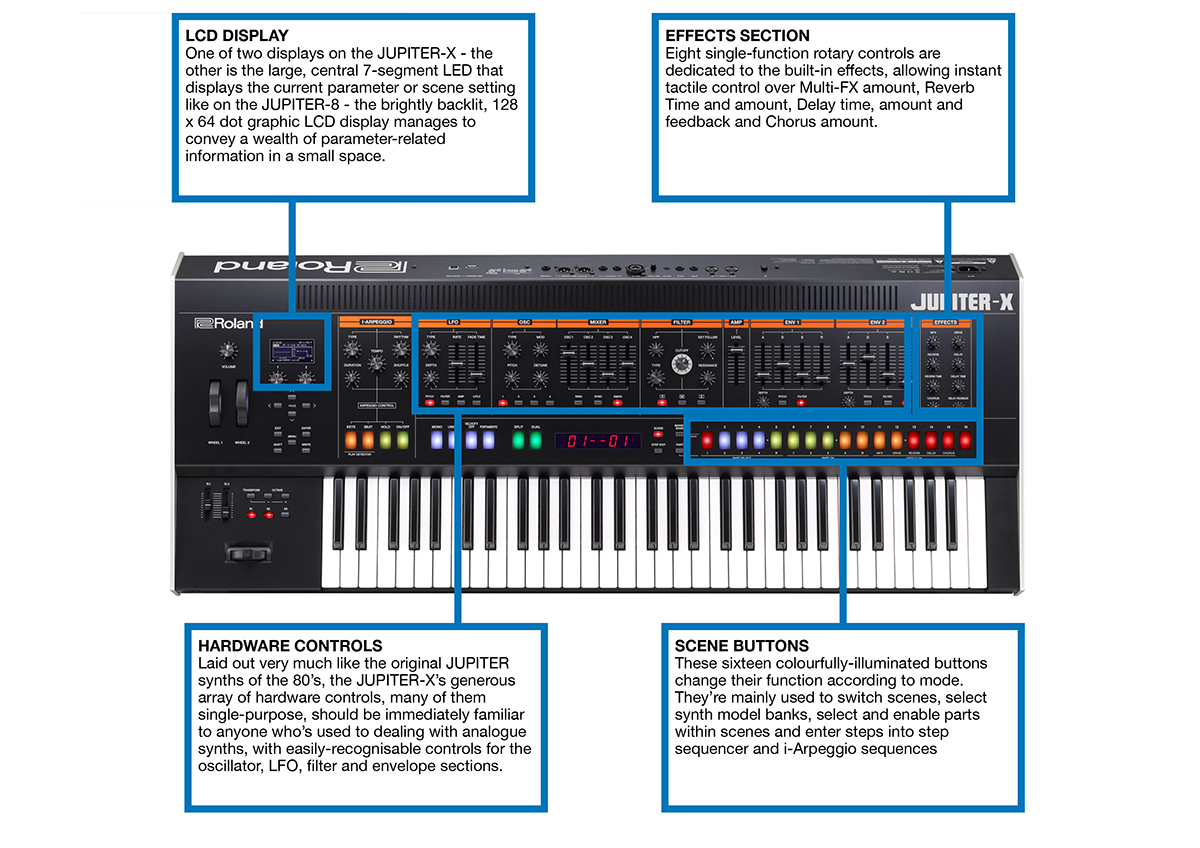
Roland Jupiter-X: Performance and verdict
The keyboard itself is just sublime, with a medium-weight synth action that has a palpable air of quality about it. Feel-wise, it reminds us a little of the keyboard on the Roland D50, our favourite ever synth action keybed. There’s no squishy, D50-like polyphonic aftertouch, which is a shame, but channel aftertouch is present and correct when you push down hard.
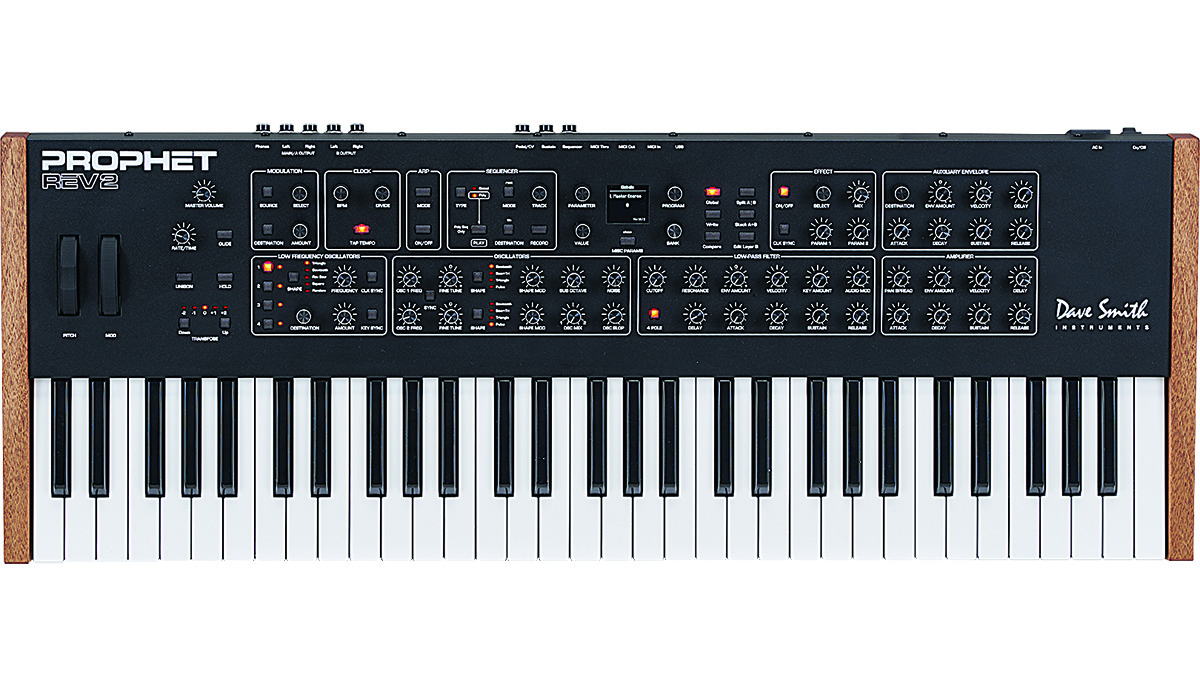
• Sequential Prophet REV2-16
One of the best modern analogue polysynths on the market, with an iconic pedigree behind it. With two digitally controlled oscillators per voice, three envelope generators and that distinctive 2/4 pole Curtis low-pass filter, the 16-voice prophet is really a joy to play if you like the Sequential sound.
• Arturia PolyBrute
This 6-voice modern analogue polysynth not only looks great, it packs a punch sonically too, with two Brute wave-shaping oscillators per voice, a dual filter design that features Steiner multimode and Moog 24 dB ladder filters, plus a semi-modular matrix-based modulation system that includes three envelopes as well as three LFOs.
Round the back, there’s a proper set of pro-level connectors, including an IEC mains connector (no external PSU here), a pair of 5-pin DIN MIDI In and Out ports, two control pedal inputs, a 3.5mm auxiliary input, plus an XLR combo microphone input (for the vocoder). There’s a pair of balanced stereo XLR outputs, plus two unbalanced 6.3mm line outputs, a 6.3mm headphone output and two USB ports: one for data storage and use with the optional WC-1 Bluetooth adapter and one to connect to a host computer.
There’s also a convenient additional 3.5mm headphone jack on the front to the left of the keyboard; very useful if you have the synth set up permanently in a studio setting. Believe it or not, there’s a hidden set of internal speakers that can be activated via a menu setting, but these should probably only be resorted to if you have no headphones or monitors to hand.
The virtual synth models that come bundled with the Jupiter-X include the Jupiter-X (a 4-Oscillator ‘modern’ Jupiter synth with lots of extended parameters that was new in firmware V3.0), Jupiter-8, Juno 106, JX-8P, SH-101, XV5080 and RD piano series.
There’s a fantastic-sounding built-in vocoder, and also a drum machine engine, giving access to all of those classic Roland drum sounds from machines like the TR-808, 909, 707 and CR-78, as well as a useful bunch of acoustic and other electronic kits.
On top of all that, with the optional WC-1 Bluetooth adapter, which pairs with your mobile phone or tablet and includes a free 12-month subscription to Roland Cloud, you can download and install an additional JD-800 model and the Vocal Designer expansion for extra vocoder functionality.
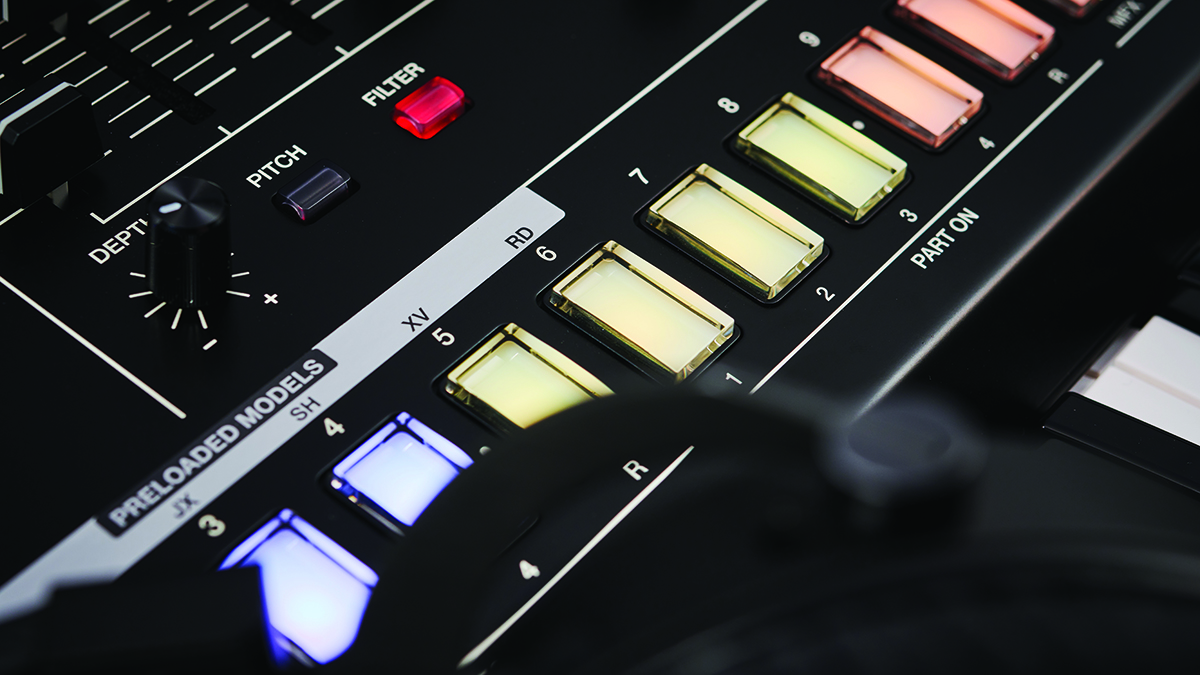
The Jupiter-X’s interface has clearly been designed with classic synth fans in mind, with a clear layout, intuitive design and many single-use controls that hark back to the classic synth design aesthetic featuring minimal use of the shift button and menu diving. Everything feels like it’s where it should be, and as such we managed to get up and running within minutes.
The hardware controls are, needless to say, a joy to use. Where a vintage synth model has four oscillators, for example, it’s so great to be able to reach out and change the blend between them instantly using the mixer section faders.
Parameters like oscillator type, modulation amount, pitch and detune have a rotary control each, although you do have to press a button to select which of the four oscillators you’re targeting with them.
Just like on the original Jupiter, you get a set of ADSR sliders for each of the two envelope generators, each with its own depth control and buttons to select whether they control filter, amp or, in the case of ENV1, pitch.
Over on the right, there’s a dedicated effects section where the reverb, delay, chorus and MFX (multi effect) rejoice in the luxury of dedicated controls for things like effect amount, delay time and feedback, reverb time, chorus depth – it really is brilliant to be able to make adjustments to the sound so quickly using dedicated controls.

What we did find a little disappointing was the stepped nature of the oscillator pitch controls, which jumped between semitone values when swept, rather than resulting in a smooth, continuous change.
Thankfully, the filter cutoff control is smooth though, and you have three vintage filter models to choose from, labelled R, M and S, for Roland, Moog and Sequential, each with its own distinct character.
Flicking through the sounds, it’s almost as if you’ve powered up a time machine and set the controls to take you back to 1981. The overall sound is warm, rich and powerful, to the point that this review almost didn’t get written on time because we didn’t want to stop playing this thing.
Powerful brass, lush warm pads and strings, huge basses and soaring leads abound in the vintage models, but you also have five RD-series piano-sourced presets, the cutting-edge new Jupiter-X engine, plus the hundreds of PCM-based sounds from the XV5080 model to select from as well. As expected, the Roland drum machine sounds are also top-notch.
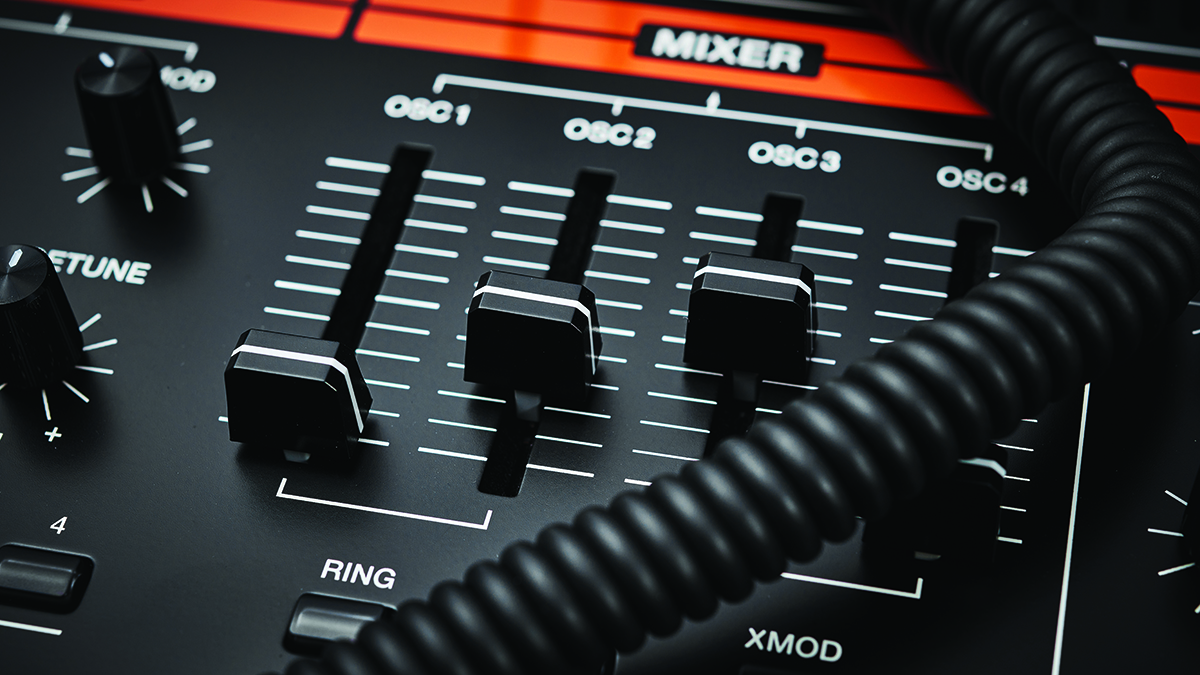
The building block of the synth’s preset structure is the Scene, each of which is made up of five parts: four melodic parts and a rhythm part, many of which have the i-Arpeggio included.
Each scene stores the entire state of the synth’s performance settings, such as tone number, pan, and volume for each part, settings common to all parts like reverb, delay, and chorus effects, plus data for each part. In total, you can save a total of 256 scenes, organised as 16 banks of 16 scenes.
Changing scenes during editing will erase changes you’ve made to the current scene, so caution must be exercised when choosing which of the pretty buttons to hit.
This has caused issues with users in the past, and although there’s still no undo function, thankfully Roland has now introduced a nag screen with the latest firmware that asks you if you’re sure you want to move to another scene.
To try individual sounds from the various synth models, you simply exit Scene mode by pressing the Model Bank button and hitting the button for the model you want.
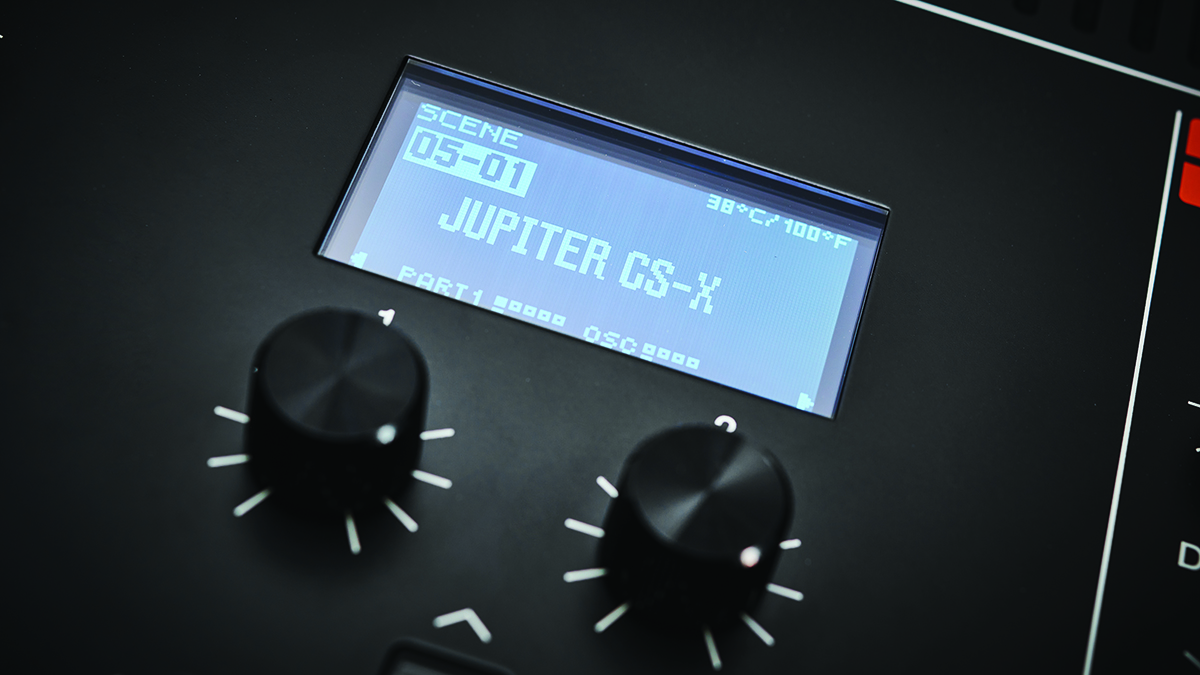
The JP-X Synth Model
Rather than being modelled on an existing piece of vintage gear like the other models, the Jupiter-X’s JP-X synth model is an entirely new, ZEN-Core-based synth engine introduced with V3.0 of the synth’s firmware, and accessed from the unlabelled 7th button while in Model Bank select mode.
You can have up to four different partials per part, and each partial can use any one of the virtual analogue engines or any of the PCM samples from the XV5080 soundset, with up to 256-note polyphony available.
This is where some menu diving is unavoidable; as with most modern synths, the list of available parameters goes way beyond the scope of the front panel controls.
Luckily though, the graphic LED display and accompanying navigation buttons and encoders do the job well enough, and the sounds are more than worth the effort, often prompting us to come up with things we’d never played before.
Taken with all of the vintage models, the Jupiter-X is a true inspiration machine, whatever decade you’re aiming at.
Verdict
The i-Arpeggiator is something of a jewel in the crown for the Jupiter-X (and also the Xm on which it also appears, albeit with fewer controls).
It can respond both to the dynamics of your playing as well as arpeggiate a few parts at a time in ways that are generated in real-time to complement each other.
Over time this could prove to be a very useful feature, and although we found it both inspiring and unpredictable in equal measure, it can be tamed to produce regular, vanilla arpeggiation if desired.
MusicRadar verdict: This is not just a modern take on a classic original, but a great product in its own right and worthy of the Jupiter name.
Roland Jupiter-X: The web says
"If you're in the market for some vintage Rolands today, you have to audition the Jupiter X. Despite some flaws, it sounds wonderful."
Sound On Sound
Roland Jupiter-X: Hands-on demos
Roland
Doctor Mix
Andertons Synths, Keys and Tech
PMTVUK
Roland Jupiter-X: Specifications
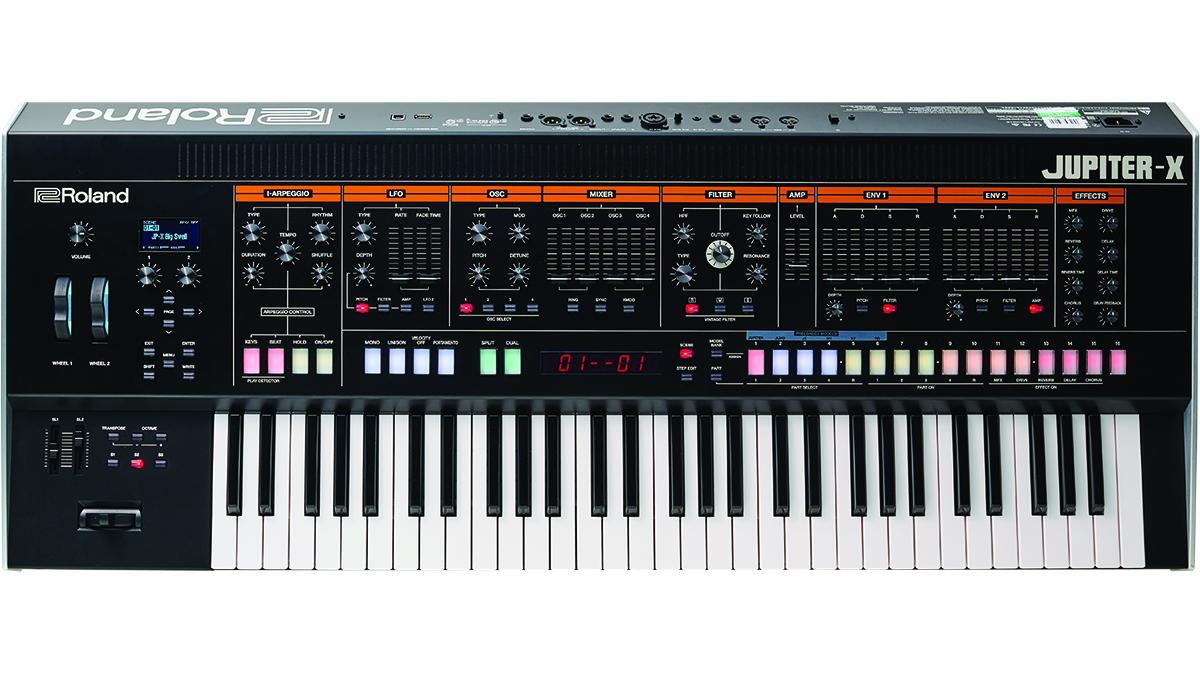
- KEY FEATURES: 7 synth engines, over 4000 presets, 5-part i-Arpeggiator, Vocoder, Pitch Bend/Modulation Lever, 2 x Wheel, 2 x Assignable Slider, 3 x Assignable Switch, 128 x 64 dot Graphic LCD Display, Expandable via Roland Cloud.
- DIMENSIONS: 1090 x 447 x 119mm.
- WEIGHT: 16.9kg.
- CONTACT: Roland
Dave has been making music with computers since 1988 and his engineering, programming and keyboard-playing has featured on recordings by artists including George Michael, Kylie and Gary Barlow. A music technology writer since 2007, he’s Computer Music’s long-serving songwriting and music theory columnist, iCreate magazine’s resident Logic Pro expert and a regular contributor to MusicRadar and Attack Magazine. He also lectures on synthesis at Leeds Conservatoire of Music and is the author of Avid Pro Tools Basics.
